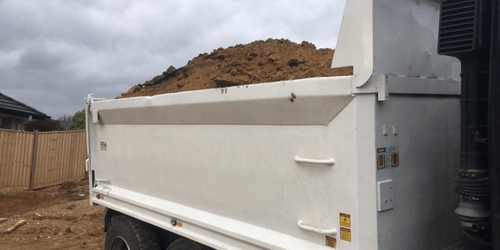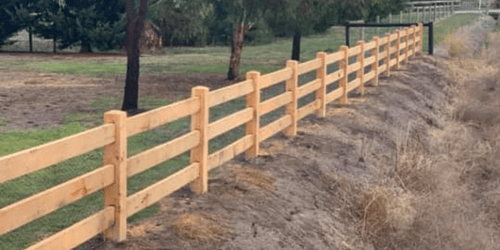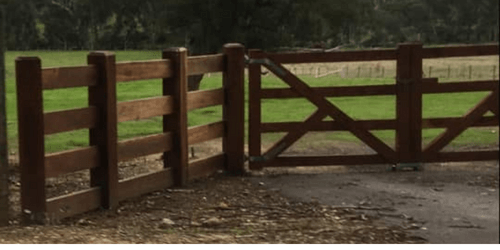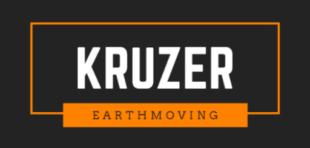HIGH-QUALITY DRESSAGE ARENAS
HORSE ARENAS




WHAT IS A DRESSAGE ARENA?
A dressage arena is a space that enables more effective horse training. It is defined by a set of rectangle-shaped poles that are often made of plastic. Horses practise various drills inside the arena to develop abilities, including balance and obedience. Depending on where you are and what you are doing, these facilities may be indoors or outside. It’s usually essential to have a secure area with an all-weather surface and lighting to teach your horse whether you intend to compete, take lessons, or simply don’t have time to hack during the day. To plan an arena, there are several factors to consider; it’s not as easy as enclosing a place and spreading some sand.
WHAT TO CONSIDER IN HORSE ARENA CONSTRUCTION
Any equestrian facility that builds a riding arena is making a big financial commitment. Still, with good design and construction, it may turn into one of the most valuable assets on the site. An effective arena design should consider your program’s unique requirements and six essential factors:
- Riding discipline
- Size of the arena
- Location
- Drainage
- Base
- Footing
To put it simply, Kruzer Earthmoving is in the business of making our customers’ fantasies of perfect riding arenas a reality. You may turn your original ideas into a covered riding arena that ideally fits your way of life with the assistance of your project coordinator and our skilled designers. Our in-house design team will work with you to develop a covered riding arena that adheres to your budget, location, size requirements, and company objectives using the most up-to-date design tools. Regardless of your goals, we are dedicated to assisting you in building the building for you and your horses that you have always imagined.
HORSE ARENA LAYERS TO TAKE NOTE OF
Constructing an outdoor riding arena surface is comparable to building a road in many respects. Quality excavation, base compaction, and material layering depend on each other. The primary distinction between road installation and dressage arena building is that loose foundation material, not asphalt, covers the highest surface of the arena. The top dressing, the subsurface, and the base are the three main layers that must be addressed when building a dressage arena or competition venue. You might prefer superior footing and arena sand to offer comfort during jumps and trots.
- Top Dressing – The top dressing, sometimes referred to as the surface footing, is the visible portion of the riding arena footing. Your arena floor ought to offer enough cushion while maintaining stability. The substance should stick together without packing too firmly.
- Subsurface – Sand with round or angular particle sizes or similar synthetic material is typically used for this segment. In many cases, the subsurface is only an extension of the top dressing and is located between the base and top dressing.
- Arena Base – As the basis of the arena, the base material is undoubtedly its most significant layer. Most bases are clay, and their sizes vary based on the arena’s circumstances. The base permits the footing product in your arena to properly sustain your horses for a long time, much as the foundation of a structure is vital to keep it standing for a long time. Kruzer Earthmoving will not skimp on the essential components for your arena. By doing this, you decrease its capacity to condense into a smooth, hard layer that will stop unwanted material from below from rising to the surface.
Spending time and money on a contractor who is unqualified to build horse arenas or who lacks experience in the field is a waste of time and money. Whether you want to create a luxury all-weather competition arena in Victoria, construct an indoor arena surface, or build an outdoor riding arena at your private facility, Kruzer Earthmoving can help!
THE BIGGEST MISTAKES MADE DURING HORSE ARENA BUILDS
Anyone who has ever had to pay for cleanup work can relate to the extremely high costs of mistakes made when constructing a horse arena. A horse arena is a significant investment, so making the proper decisions early in the planning process will help you avoid wasting time, money, and pain. If you intend to build your arena, consider the following considerations and remember that one error can frequently lead to many.
Wrong Location
Too often, the wrong place is chosen because of how it looks. Never build an arena near a hill’s foot, on a slope, or in the water’s route of runoff.
Improper Drainage Installation
An unstable riding surface due to water gathering on your arena may result in costly sublayers and surface failure. Location, topography, yearly rainfall forecasts, soil type, and sub-layers should all be factored into the design of a practical drainage system.
Choosing Inappropriate Materials
You must invest time and money to use suitable materials for your arena. Since the materials used differ from one place to another, there is no universally applicable “written rule” for sublayers. The quality and efficacy of your arena may be destroyed in a blink of an eye if you cut corners on basic layers or go for faulty materials.
Loose Maintenance
The post-arena building maintenance plan determines how well a beautiful arena will perform. Poor upkeep leads to unsafe riding conditions.
Giving Less Importance to the Top Layer
A top layer can be made from a wide variety of materials. Of course, it’s conceivable that you’ll choose a commercially produced item, and the maker should be able to provide you with many details about how well it performs. When selecting materials for your top layer, consider your location, requirements, and the well-being of both the rider and the horse.
PICK FROM A VARIETY OF SURFACE OPTIONS FOR YOUR RIDING ARENA
Your requirements and finances will determine the surface you pick. However, without the proper base, no surface will function well; therefore, it is imperative to do proper ground preparations, drainage, and membrane installations, among other things. An “ideal” riding surface should have traction, be cushioned, not be unduly slippery or dusty, not be too harsh on the horse’s feet, be affordable, and be simple to maintain.
- Sand – Sand, which ranges in size from fine sand with a diameter of 0.05 mm to coarse sand with a diameter of 2.00 mm, is a frequent component in many arena surfaces. Sand can be used alone, although it’s typically mixed with other materials. Sand types include silica and fibre. Silica sand, which has a sub-angular grain form for improved stability, was once common but is now typically blended with rubber or fibre. Fibre sand is another popular alternative; sand combined with carpet fibres makes it durable and a suitable riding surface that isn’t too deep. To keep the fibres well mixed, it does need to be watered and graded regularly.
- Wood Chippings – A footing made entirely of inorganic materials will receive cushioning and moisture-holding ability from wood chips or coarse sawdust. The least expensive flooring options are usually wood chips since they require no upkeep, produce little dust, and decay naturally, making them easy to discard when the time comes. However, you should be aware that using recycled wood may result in nails, screws, and staples caught in your horse’s hooves. In addition, when wood chips age, the surface becomes slippery and unstable.
- Synthetic Materials – According to experts, synthetic surfaces may be applied to existing surfaces as “top-ups” or as an entire surface over a basic drainage layer, possibly saving a tonne of money on labour and sand bases. Ground rubber is typically used with sand or other surface materials to reduce compaction and offer some cushion to the surface. Products made of rubber will not rot like wood, but they will be worn down by sand and horse hooves. To avoid buying rubber that is the wrong size or contains foreign items, take care to only purchase rubber created solely for dressage and riding arenas. It’s also the least environmentally friendly option for footing!
WHY HIRE EXPERIENCED HORSE ARENA CONTRACTORS LIKE KRUZER EARTHMOVING
It requires skill, patience, and knowledge of the resources available to build the perfect horse arena. The majority of arenas cannot be built using a blueprint or formula found online or on social media because almost every arena has unique issues, such as budgetary restrictions, drainage issues, climate issues, usage patterns, maintenance requirements, and—most importantly—the lack of access to high-quality arena materials in your area. Worry not because Kruzer Earthmoving is meticulous and detail-oriented from start to finish!
Building a horse arena properly is one of the finest investments you can make for yourself and your horses. At Kruzer Earthmoving, we can design and build your horse-riding arena regardless of where you are in the process. Our services include material procurement, scheduling, and assistance throughout the process, and our excavators can work within any budget. We employ cutting-edge machinery to deliver the most precise results when installing horse arenas, maintaining dressage arenas, and providing the highest calibre drainage services. Get in touch with the premium horse arena builders to know more about our rates!
FAQ ON HORSE ARENAS
The arena or ring where you ride a horse is referred to as such. Depending on where you are and what you are doing, these facilities may be indoors or outside. For many horse owners, a riding arena—also known as a school or menage—is a must. It's normally a top importance to have a secure area with an all-weather surface and lighting to teach your horse whether you intend to compete, take lessons, or simply don't have time to hack during the day.
According to experts, a typical horse arena should have a minimum width of 60' and an internal height of 16' to 18', measured from the ground to the peak of the trusses. The following are the suggested dimensions for horse arenas: sixty feet broad by one hundred and eighty feet long.
- The top dressing, the subsurface, and the base are the three main layers that need to be addressed when you build a dressage arena or competition venue. You might be accustomed to selecting superior footing and arena sand to offer comfort during jumps and trots. When your horses utilise the facilities, this aids in their protection. Avoid DIYing it!
If you're building horse facilities for the first time, it's a significant financial investment. By constructing a cutting-edge arena, they may make more than 10 times as much in a lifetime, ranging from $40,000 to $500,000 in value. Your horse arena might grow into a very successful company if you build and care for it properly. With a secure, competition-ready facility, you can attract both discipline riders and casual horse owners.
Because it can be blended with dirt, wood chips, rubber, and other materials to create the perfect surface, sand is a fantastic material for horse arenas. To increase moisture retention, dirt or wood can be mixed with our sand, for instance. Horse hooves can have more cushioning by adding rubber.
As soon as any ruts or holes form, an arena should be dragged. How many horses use an arena will determine how often it needs to be dragged. It may only be necessary to drag a personal arena once a week if only one or two horses are working there each day. The arena in a busy lesson barn could require dragging every day.

